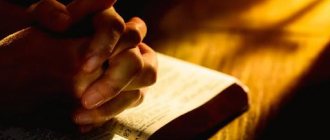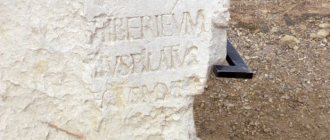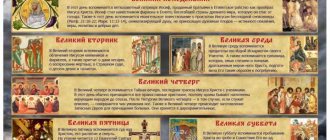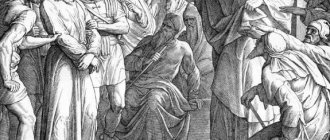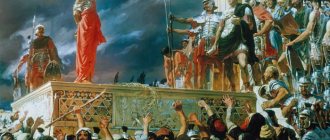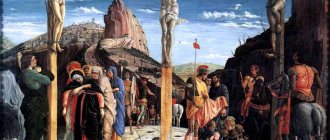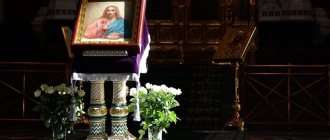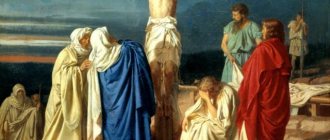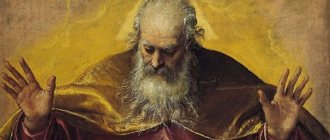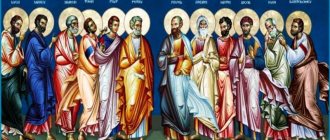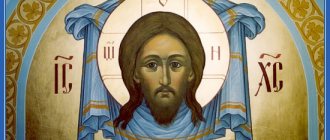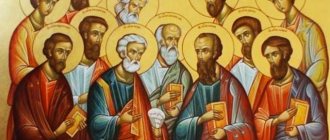Crucifixion
Bright Easter, the holiday of the triumph of life, is preceded by days of general sorrow. For victory over death was achieved at the cost of bloody torment. Keeping this in mind, all Christians wear a cross around their neck. Christ was not the only one, not the first and far from the last, executed by crucifixion. Millions of people around the world suffered the same terrible death. And many believers strive to visit the place in the Holy Land where Jesus Christ was crucified .
Terrible execution
The torture of the cross was not only the most terrible, but also the most shameful execution. She came to the Roman Empire from Carthage, and there, in turn, penetrated from Phenicia. The Romans never executed citizens in this way - only slaves.
Interesting fact
After the defeat of Spartacus in 73 BC. 6,000 rebels were crucified. And the crosses stood along the longest Appian Way for 195 km.
However, sometimes in Rome they made an exception for the worst criminals. Such executions were carried out as an edification to other villains, so that, fearing the torment of death, they would stop their dark deeds. Not all crosses were the same as the one on which Christ was crucified; other forms were also used:
- T-shaped;
- X-shaped;
- Y-shaped.
Most often they crucified with their heads down, because it was more convenient - a long pole was stuck deep into the ground, and the transverse bar turned out to be quite low.
There are several versions of how exactly the execution itself took place. According to one of them, the executed themselves carried its instruments - crosses - to the place of their death, according to the other - only the crossbar, while the pillars were installed in advance.
In some cases, the hands were not nailed down, but tied with ropes. But more often they used nails. They were driven not into the palms, since they would not have supported the weight of the body, but into the wrists. The legs were also nailed down. The crosses never had a crossbar, because if there was one, the meaning of the terrible execution would be lost. The victims on the cross died not from blood loss or pain, but from suffocation - precisely because there was no support under their feet.
Flagellation of Christ, Desecration of Christ, Procession to Golgotha, Ascension to the Cross
Before execution, they were usually scourged. Then they had to carry the transverse part of the cross to the place of crucifixion.
To prevent death from painful shock, those sentenced to execution were offered wine with opium. But, as the Gospel of Mark says, Jesus rejected the offering, and therefore suffered more than others.
“And they gave Him wine and myrrh to drink; but He did not accept.” (Mark 15:23)
A blow to the rib with a spear was not applied to finish off, but posthumously, as proof of the fact of death.
LiveInternetLiveInternet
Among all Christians, only Orthodox and Catholics venerate crosses and icons.
They decorate the domes of churches, their houses, and wear them around their necks with crosses. The reason why a person wears a cross is different for everyone. Some people pay tribute to fashion in this way, for others the cross is a beautiful piece of jewelry, for others it brings good luck and is used as a talisman. But there are also those for whom the pectoral cross worn at baptism is truly a symbol of their endless faith.
Today, shops and church shops offer a wide variety of crosses of various shapes. However, very often not only parents who are planning to baptize a child, but also sales consultants cannot explain where the Orthodox cross is and where the Catholic one is, although it is, in fact, very simple to distinguish them. In the Catholic tradition - a quadrangular cross with three nails. In Orthodoxy there are four-pointed, six- and eight-pointed crosses, with four nails for the hands and feet.
Cross shape
Four-pointed cross
So, in the West the most commonly used is the four-pointed cross . Starting from the 3rd century, when similar crosses first appeared in the Roman catacombs, the entire Orthodox East still uses this form of the cross as equal to all others.
Eight-pointed Orthodox cross
For Orthodoxy, the shape of the cross is not particularly important; much more attention is paid to what is depicted on it, however, eight-pointed and six-pointed crosses have gained the most popularity.
The eight-pointed Orthodox cross most closely corresponds to the historically accurate form of the cross on which Christ was already crucified. The Orthodox cross, which is most often used by the Russian and Serbian Orthodox churches, contains, in addition to a large horizontal crossbar, two more. The top symbolizes the tablet on the cross of Christ with the inscription “Jesus of Nazareth, King of the Jews” (INCI, or INRI in Latin). The lower oblique crossbar - the support for the feet of Jesus Christ symbolizes the “righteous standard” that weighs the sins and virtues of all people. It is believed that it is tilted to the left, symbolizing that the repentant thief, crucified on the right side of Christ, (first) went to heaven, and the thief crucified on the left side, by his blasphemy of Christ, further aggravated his posthumous fate and ended up in hell. The letters IC XC are a christogram symbolizing the name of Jesus Christ.
Saint Demetrius of Rostov writes that “when Christ the Lord wore a cross on His shoulders, then the cross was still four-pointed; because there was no title or foot on it yet. There was no footstool, because Christ had not yet been raised on the cross and the soldiers, not knowing where Christ’s feet would reach, did not attach a footstool, having finished this already on Calvary.” Also, there was no title on the cross before the crucifixion of Christ, because, as the Gospel reports, first “they crucified Him” (John 19:18), and then only “Pilate wrote the inscription and put it on the cross” (John 19:19 ). It was first that the soldiers “who crucified Him” divided “His clothes” by lot (Matthew 27:35), and only then “they placed an inscription over His head, signifying His guilt: This is Jesus, the King of the Jews” (Matthew 27: 37).
Since ancient times, the eight-pointed cross has been considered the most powerful protective tool against various kinds of evil spirits, as well as visible and invisible evil.
Six-pointed cross
The six-pointed cross was also widespread among Orthodox believers, especially during the times of Ancient Russia . It also has an inclined crossbar: the lower end symbolizes unrepentant sin, and the upper end symbolizes liberation through repentance.
However, all its strength does not lie in the shape of the cross or the number of ends. The cross is famous for the power of Christ crucified on it, and this is all its symbolism and miraculousness.
The variety of forms of the cross has always been recognized by the Church as quite natural. According to the expression of the Monk Theodore the Studite, “the cross of every form is the true cross” and has unearthly beauty and life-giving power.
“There is no significant difference between the Latin, Catholic, Byzantine, and Orthodox crosses, or between any other crosses used in Christian services. In essence, all crosses are the same, the only differences are in the form,” says Serbian Patriarch Irinej.
Crucifixion
In the Catholic and Orthodox Churches, special importance is attached not to the shape of the cross, but to the image of Jesus Christ on it.
Until the 9th century inclusive, Christ was depicted on the cross not only alive, resurrected, but also triumphant, and only in the 10th century did images of the dead Christ appear.
Yes, we know that Christ died on the cross. But we also know that He later resurrected, and that He suffered voluntarily out of love for people: to teach us to take care of the immortal soul; so that we too can be resurrected and live forever. In the Orthodox Crucifixion this Paschal joy is always present. Therefore, on the Orthodox cross, Christ does not die, but freely stretches out his arms, Jesus’ palms are open, as if he wants to hug all humanity, giving them his love and opening the way to eternal life. He is not a dead body, but God, and his whole image speaks of this.
The Orthodox cross has another, smaller one above the main horizontal crossbar, which symbolizes the sign on the cross of Christ indicating the offense. Because Pontius Pilate did not find how to describe the guilt of Christ; the words “Jesus of Nazareth, King of the Jews” in three languages: Greek, Latin and Aramaic. In Latin in Catholicism this inscription has the form INRI , and in Orthodoxy - IHCI (or ІННІ, “Jesus of Nazareth, King of the Jews”). The lower oblique crossbar symbolizes a support for the legs. It also symbolizes the two thieves crucified to the left and right of Christ. One of them, before his death, repented of his sins, for which he was awarded the Kingdom of Heaven. The other, before his death, blasphemed and reviled his executioners and Christ.
Above the middle crossbar there are the following inscriptions: “IC” “XC” - the name of Jesus Christ; and under it: “NIKA” - Winner.
On the cross-shaped halo of the Savior they necessarily wrote the Greek letters UN , meaning “truly who is”, because “God said to Moses: I am who is” (Ex. 3:14), thereby revealing His name, expressing the originality, eternity and immutability of the being of God .
In addition, the nails with which the Lord was nailed to the cross were kept in Orthodox Byzantium. And it was known for sure that there were four of them, not three. Therefore, on Orthodox crosses, Christ’s feet are nailed with two nails, each separately. The image of Christ with crossed feet nailed to a single nail first appeared as an innovation in the West in the second half of the 13th century.
| Orthodox Crucifix | Catholic Crucifix |
In the Catholic Crucifixion, the image of Christ has naturalistic features. Catholics depict Christ as dead, sometimes with streams of blood on his face, from wounds on his arms, legs and ribs (stigmata). It reveals all human suffering, the torment that Jesus had to experience. His arms sag under the weight of his body. The image of Christ on the Catholic cross is plausible, but it is an image of a dead man, while there is no hint of the triumph of victory over death. The crucifixion in Orthodoxy symbolizes this triumph. In addition, the Savior's feet are nailed with one nail.
The meaning of the Savior's death on the cross
The emergence of the Christian cross is associated with the martyrdom of Jesus Christ, which he accepted on the cross under the forced sentence of Pontius Pilate. Crucifixion was a common method of execution in Ancient Rome, borrowed from the Carthaginians - descendants of Phoenician colonists (it is believed that the crucifixion was first used in Phenicia). Thieves were usually sentenced to death on the cross; many early Christians, persecuted since the time of Nero, were also executed in this way.
Roman crucifixion
Before the suffering of Christ, the cross was an instrument of shame and terrible punishment. After His suffering, it became a symbol of the victory of good over evil, life over death, a reminder of God’s endless love, and an object of joy. The incarnate Son of God sanctified the cross with His blood and made it a vehicle of His grace, a source of sanctification for believers.
From the Orthodox dogma of the Cross (or Atonement) undoubtedly follows the idea that the death of the Lord is the ransom of all , the calling of all peoples. Only the cross, unlike other executions, made it possible for Jesus Christ to die with outstretched hands calling “to all the ends of the earth” (Isa. 45:22).
Reading the Gospels, we are convinced that the feat of the cross of the God-man is the central event in His earthly life. With His suffering on the cross, He washed away our sins, covered our debt to God, or, in the language of Scripture, “redeemed” (ransomed) us. The incomprehensible secret of the infinite truth and love of God is hidden in Calvary.
The Son of God voluntarily took upon himself the guilt of all people and suffered for it a shameful and painful death on the cross; then on the third day he rose again as the conqueror of hell and death.
Why was such a terrible Sacrifice needed to cleanse the sins of mankind, and was it possible to save people in another, less painful way?
The Christian teaching about the death of the God-man on the cross is often a “stumbling block” for people with already established religious and philosophical concepts. Both to many Jews and people of Greek culture of apostolic times, it seemed contradictory to assert that the omnipotent and eternal God descended to earth in the form of a mortal man, voluntarily endured beatings, spitting and shameful death, that this feat could bring spiritual benefit to humanity. "This is impossible!" - some objected; "It is not necessary!" - others argued.
St. Apostle Paul in his letter to the Corinthians says: “Christ did not send me to baptize, but to preach the gospel, not in wisdom of speech, so as not to make the cross of Christ of no effect. For the word about the cross is foolishness to those who are perishing, but to us who are being saved it is the power of God. For it is written: I will destroy the wisdom of the wise, and destroy the understanding of the prudent. Where is the sage? where is the scribe? where is the questioner of this century? Has not God turned the wisdom of this world into foolishness? For when the world through its wisdom did not know God in the wisdom of God, it pleased God through the foolishness of preaching to save those who believe. For both the Jews demand miracles, and the Greeks seek wisdom; But we preach Christ crucified, a stumbling block to Jews and foolishness to Greeks, but to those who are called, both Jews and Greeks, Christ the power of God and the wisdom of God” (1 Cor. 1:17-24).
In other words, the apostle explained that what in Christianity was perceived by some as temptation and madness, is in fact a matter of the greatest Divine wisdom and omnipotence. The truth of the atoning death and resurrection of the Savior is the foundation for many other Christian truths, for example, about the sanctification of believers, about the sacraments, about the meaning of suffering, about virtues, about feat, about the purpose of life, about the upcoming judgment and resurrection of the dead and others.
At the same time, the atoning death of Christ, being an event inexplicable in terms of earthly logic and even “tempting for those who are perishing,” has a regenerating power that the believing heart feels and strives for. Renewed and warmed by this spiritual power, both the last slaves and the most powerful kings bowed in awe before Calvary; both dark ignoramuses and the greatest scientists. After the descent of the Holy Spirit, the apostles were convinced by personal experience of what great spiritual benefits the atoning death and resurrection of the Savior brought them, and they shared this experience with their disciples.
(The mystery of the redemption of mankind is closely connected with a number of important religious and psychological factors. Therefore, to understand the mystery of redemption it is necessary:
a) understand what actually constitutes the sinful damage of a person and the weakening of his will to resist evil;
b) we must understand how the devil’s will, thanks to sin, gained the opportunity to influence and even captivate the human will;
c) we need to understand the mysterious power of love, its ability to positively influence a person and ennoble him. At the same time, if love most of all reveals itself in sacrificial service to one’s neighbor, then there is no doubt that giving one’s life for him is the highest manifestation of love;
d) from understanding the power of human love, one must rise to understanding the power of Divine love and how it penetrates the soul of a believer and transforms his inner world;
e) in addition, in the atoning death of the Savior there is a side that goes beyond the human world, namely: On the cross there was a battle between God and the proud Dennitsa, in which God, hiding under the guise of weak flesh, emerged victorious. The details of this spiritual battle and Divine victory remain a mystery to us. Even Angels, according to St. Peter, do not fully understand the mystery of redemption (1 Peter 1:12). She is a sealed book that only the Lamb of God could open (Rev. 5:1-7)).
In Orthodox asceticism there is such a concept as bearing one’s cross, that is, patiently fulfilling Christian commandments throughout the life of a Christian. All difficulties, both external and internal, are called “cross.” Everyone carries their own cross in life. The Lord said this about the need for personal achievement: “Whoever does not take up his cross (deviates from achievement) and follows Me (calls himself a Christian) is unworthy of Me” (Matthew 10:38).
“The cross is the guardian of the entire universe. The Cross is the beauty of the Church, the Cross of kings is the power, the Cross is the affirmation of the faithful, the Cross is the glory of an angel, the Cross is a plague of demons,” affirms the absolute Truth of the luminaries of the Feast of the Exaltation of the Life-Giving Cross.
The motives for the outrageous desecration and blasphemy of the Holy Cross by conscious cross-haters and crusaders are quite understandable. But when we see Christians drawn into this vile business, it is all the more impossible to remain silent, for - in the words of St. Basil the Great - “God is betrayed by silence”!
Differences between Catholic and Orthodox crosses
Thus, there are the following differences between the Catholic cross and the Orthodox one:
| Catholic cross | Orthodox cross |
- The Orthodox cross most often has an eight-pointed or six-pointed shape. The Catholic cross is four-pointed.
- The words on the sign on the crosses are the same, only written in different languages: Latin INRI (in the case of a Catholic cross) and Slavic-Russian IHCI (on an Orthodox cross).
- Another fundamental position is the position of the feet on the Crucifix and the number of nails . The feet of Jesus Christ are placed together on a Catholic Crucifix, and each is nailed separately on an Orthodox cross.
- The image of the Savior on the cross is different . The Orthodox cross depicts God, who opened the path to eternal life, while the Catholic cross depicts a man experiencing torment.
Material prepared by Sergey Shulyak
Gospel account of the Crucifixion of Christ
Each of the evangelists tells a story about the last days and hours of the Savior on earth. The apostles agree on the main points, although the details differ.
Stills from Mel Gibson's film "The Passion of the Christ"
Thus, in all four texts it is written that when Jesus was led to execution, the cross behind Him was carried by a certain Simon, whom he met on the road and was returning, as Mark mentions, from field work. On Golgotha they crucified Him, and next to them were two criminals. One blasphemed Him along with the scribes, Pharisees and other onlookers. They spoke:
“Why doesn’t God save you if you are His son? Prove to us, come down from the cross!”
The soldiers who were near those executed shared Jesus’ vestments. A few hours later the Savior died.
These are facts that are, to a greater or lesser extent, stated in all the Gospels. But each of the students added their own details.
For example, Luke mentions that Jesus, as He was being led to execution, addressed the women, saying:
“Daughters of Jerusalem! Do not weep for Me, but weep for yourself and for your children, for the days are coming in which they will say: Blessed are the barren, and the wombs that have not given birth, and the breasts that have not nursed!” (Luke 23:28-29)
And John talks about how the Savior entrusted his Mother to his care:
“At the cross of Jesus stood His Mother and His Mother’s sister, Mary of Cleophas, and Mary Magdalene. Jesus, seeing His Mother and the disciple standing there, whom He loved, said to His Mother: Woman! Behold, Your son. Then he says to the disciple: Behold, your Mother! And from that time on, this disciple took Her to himself.”
(John 19:26-28)
See also:
Christian mythology Holy Cross History of the Holy Cross Ascension to the Cross St. Longinus Trinity Crucifixion, cult object
Cross
In the capital of Ancient Rome, crucifixion was a widely used form of punishment for the most base criminals and slaves. It was accomplished, apparently, as follows. At the place of execution, a stipes was dug in - a vertical pillar that could be used more than once. The convict carried a crossbar (patibulum) to the place of execution, to which his hands were tied (to avoid resistance). In place, his hands were nailed at the wrists to the ends of this crossbar, which rose onto the post. With the help of slots and spikes, it was fixed either at the top of the post (most often) or slightly lower. In the first case, the result was a crux commissa (“connected”) or a tau cross (from the Greek letter “T”); in the second - crux immissa (“crossed”). Finally, the legs of the person being crucified were nailed to a vertical post.
Nailing was common, rather than tying, which is typical for the depiction of robbers. Until the 12th century. Traditionally, four nails were depicted - for the hands and for each foot. Subsequently, with a few exceptions, there were three of them (the legs were nailed with one nail). The only mention of them in the Gospel was made by the unbelieving Thomas (John 20:25). Now there are more than twenty nails as holy relics.
The footrest (suppedaneum) is an invention of medieval artists.
In ancient times, an inscription (titulus) indicating the guilt of the convicted person was hung around his neck, and at the place of execution it was attached to the top of the cross. Pilate “wrote the inscription and placed it on the cross. It was written Jesus of Nazareth, King of the Jews (...) in Hebrew, Greek, and Roman.” (John 19:19-20) In Renaissance art it was usually given only in Latin - “Iesus Nazarenus Rex Iudaeorum”, abbreviated: “INRI”. In the painting of the Counter-Reformation it can be seen in its entirety in three languages.
In the art of the 13th century. (occasionally and later) the cross sometimes takes the form of a tree of life (lingum vitae). This plot motif comes from the writings of Bonaventure, who wrote that it was the tree of knowledge, born again through the power of the Savior's blood - another way to reflect the connection between the Crucifixion and the Fall.
Figure of Christ
Artists since the Renaissance have depicted Christ as dead with his head tilted over his shoulder (usually the right one). (“having bowed his head, he gave up his spirit” John 19:30). The crown of thorns began to be often depicted with gray. XIII century, when Louis IX brought holy relics from the crusade to the Middle East. Before the era of the Counter-Reformation, this detail was rarely missed by artists. The Medieval Church discussed the question of whether Christ was naked on the cross (in Ancient Rome it was customary to execute this way). In early eastern depictions of the plot, he wears a long, sleeveless tunic, and sometimes Christ wears thin clothes at his waist. But all these are inventions of artists of the early Middle Ages, like the loincloth (perizonium).
Characters around the cross
- Two robbers
All the Gospels tell about two thieves crucified with Christ. Their names Dismas and Gestas ("good" and "bad") are taken from the apocryphal Gospel of Nicodemus. In Luke, one of them reproached the other that their punishment was deserved, while Christ was innocent. The Savior said to this: “Truly I tell you, today you will be with Me in Paradise.” In fulfillment of the promise, the thief found himself among those saved by Christ during the Descent into Hell. From Luke's account a contrast is drawn between the repentant sinner and the unrepentant. The good one is to the right of Christ, his face is calm and peaceful, and his soul is carried away by an angel. The bad one is on the left, he is tormented, and his soul is in the claws of the demon. John reports that the soldiers broke the robbers' legs to hasten their hour of death. The paintings depict this both explicitly and in the form of blood pouring from the wounds on their legs. This motif is found in German art of the 15th century. The Byzantine manual for artists instructs that the criminal on the right is a gray-haired man with a round beard, and on the left is young and beardless. The early Italian Renaissance followed the Byzantine tradition. In the Middle Ages, robbers (according to the degree of holiness) were written smaller than the Savior. Later in the West, to distinguish them from Christ, they are usually depicted not nailed down, but tied by the armpits to the T-shaped crux commissa, hanging from its crossbar (patibiilum). Sometimes they are blindfolded.
- Warriors with spear and sponge
Legendary characters named Longinus (from the Greek “spear”) and Stephaton. In the Middle Ages they were constantly depicted together on both sides of the cross, with a raised spear (representing the Church) and a cane with a sponge (Synagogue). The first of them is better known: “But when they came to Jesus, when they saw Him already dead, they did not break His legs. But one of the soldiers pierced His side with a spear, and immediately blood and water flowed out” (John 19:33-34). It is surrounded by many legends and speculations. The “Golden Legend” tells of the healing of his blindness with blood from the wounds of Christ, subsequent baptism and martyrdom. Canonized. Longinus's blindness can be indicated by the warrior pointing his pike.
Longinus is identified with the centurion of the Synoptic Gospels (not in John), who exclaimed: “Truly He was the Son of God.” In painting, these characters are often depicted separately: a warrior with a pike and a centurion in military garb (possibly on horseback); he has a look of horror on his face.
Stephaton was depicted somewhat less frequently. All four evangelists noted that the sponge at the end of the cane was soaked in vinegar, which was offered to Christ as a drink just before his death. It is also not uncommon to depict only a spear and a sponge, towering among military weapons.
- Warriors casting lots
The characters are frequent in all periods of the history of Christian art. Usually the fullest description in John is followed (19:23-24). The clothes of the crucified Christ were divided into four parts - “a part for each soldier”; and they cast lots for a tunic cut from a single piece of fabric (“Let us not tear it apart, but let us cast lots for it” (John 19:24).). Warriors are depicted at the base of the cross or in the corner of the picture. Their number varies, but rarely less than three. They throw dice and quarrel. Characteristic images: a soldier with a knife, ready to cut his tunic; a soldier who tries to reconcile quarreling people.
- Virgin Mary and St. John
A very common plot whose typology was established in the 9th century. (Carolingian Renaissance). Illustrates the entrustment of the Virgin Mary by the still living Christ to the Apostle John:
“Jesus, seeing the Mother and the disciple standing there, whom he loved, said to His Mother: Woman! Behold, Your son. Then he says to the disciple: Behold, your Mother! And from that time on, this disciple took Her to himself.” (John 19:26-27)
They are depicted with bowed heads on the right - the Virgin Mary, and on the left - John of Christ. One hand of the Virgin Mary, supported under the elbow of the other, can be raised to the cheek. (Traditional mournful gesture, known from Hellenistic art) When the figure of the living Christ (triumphant) gives way to the dead Christ (with a wound in the rib), the literal meaning of the Gospel disappears, giving way to a naturalistic expression of grief. In the 15th century this topic is pushed aside by the plot of “The Fainting of the Virgin Mary.”
- Virgin Mary fainting; holy women.
A favorite Renaissance motif not supported by biblical evidence. The plot is based on the works of late medieval monks and mystics, who claimed that the Virgin Mary lost consciousness three times:
- on the way to Golgotha,
- at the crucifixion of Christ,
- after he was taken down from the cross.
Changes with the figure of the standing Virgin Mary, stoically enduring grief from the Middle Ages, occurred gradually: in early examples she is still on her feet, supported by St. wives and John, and in the 15th century. Exhausted, she falls to the ground. But from the 2nd floor. XVI century This motif is rare: it was sharply condemned by the Council of Trent, which pointed out to the artists the words of John (19:25): “At the cross of Jesus stood His Mother (...).”
The holy wives who accompanied the Virgin Mary are mentioned by all the evangelists with great discrepancies. Mary, the wife of Clopas (John), is considered the same as the mother of James and Josiah (Matthew and Mark). Also, Salome (Mark) was considered the same person as the “mother of the sons of Zebedee” in Matthew. Both of them, together with Mary Magdalene, are known as the Three Marys, although their number varied. They are almost indistinguishable from each other, with the exception of Mary Magdalene: in early Renaissance art she wears red robes. (Another tradition - see Holy Family)
- Mary Magdalene
As already noted, the difference between Mary Magdalene and other saints. wives, is outlined in early works of the Renaissance: sometimes she can be identified by her red cloak. But throughout the Renaissance and Counter-Reformation, it was given a special role. Usually, richly dressed and with luxuriant hair, she stands apart. She kneels hugging the base of the cross, kissing the bleeding wounds on Christ's feet or wiping them with her hair, which makes the episode in the house of Simon the Pharisee a typical act. May be depicted collecting drops of blood with her lips - an allusion to the Eucharist.
- Saints and donors
Note from ser. XV century a type of Crucifixion with saints present appears, as in the scene of the Holy Conversation (Sacra Conversazione), which appeared at the same time. In addition to the Virgin Mary and St. John the Apostle, almost always standing behind, John the Baptist may be depicted. He is present either as a prophet of Christ's divinity and atoning sacrifice, or as one of the patron saints.
These saints indicate the circumstances of the making of the image:
- Patrons of the city, church or founders of the order for whom this work was commissioned. Most often this is Francis of Assisi, Dominic, Augustine (with Monica).
- Equally common are images of the patrons of learning, Jerome and Catherine of Alexandria.
- The kneeling donor (customer) is often accompanied by St. Sebastian and Roch - protectors from the plague - a sign that the painting was fulfilled as a vow, and/or in gratitude for deliverance from the disease.
Symbols and allegorical figures
- Skull and snake
The presence of Adam's skull in the Crucifixion scene is determined by the Christian doctrine of atonement. It first appears in the 9th century and becomes a permanent element of the composition. The flow of blood from the Savior's body onto him is an act of symbolic washing away of Adam's sin, a particularly characteristic motif in the art of the Counter-Reformation. It can be turned upside down, like a prototype of the Eucharistic cup.
The snake with an apple in its mouth is another allusion to the Fall.
- Rana and cup
Thanks to St. Augustine, the wound inflicted on Christ by the spear acquires a special richness of symbolism. So, for example, according to his ideas:
- The wound is usually depicted on the right, good side of the body, the side of “eternal life” (By the beginning of the 17th century, this symbolic meaning was forgotten, and the position of the wound became arbitrary).
- “Blood and water” (John), poured out from the wound, symbolize the Eucharist and Baptism (The two most important Christian Sacraments were born from Christ - the “new Adam.”).
- Just as Eve was created from Adam’s rib, so the Church, “the Bride of the Lord,” was born from his wound.
From later times, the saving blood of Christ is depicted as being collected into a chalice by Adam emerging from the grave or standing below the cross. Since the 14th century Angels act in a similar way, often hovering one at each wound. Sometimes the cup simply stands at the base of the cross.
- Sun and moon
The luminaries on the sides of the cross (the Sun to the right of Christ, the Moon to the left) are a constant element of the medieval Crucifixion, still found in the art of the early Renaissance. After the 15th century are rare. They originate from images of the sun and moon in the images of the solar gods of Persia and Greece, and in Roman times on coins with portraits of emperors. These symbols came to early Christian art through the holiday of Christmas, which dates back to the then pagan celebration of the new birth of the Sun. The sun and moon originally appeared in scenes such as the Epiphany, the Good Shepherd, and Christ in Glory. By the beginning of the practice of depicting Christ on the cross, these elements already had a basis in the Bible and theology. The Synoptic Gospels tell us that from midday darkness fell over the entire earth, which lasted until three o'clock in the afternoon. The eclipse could simply be a sign that the heavens were clothed in mourning at the moment of the Savior's death, but it could also mean a more specific meaning (again according to Augustine): the sun and moon symbolized the typical relationship of the two Testaments - the Old Testament (moon) can be understood , illuminated by the light shed on him by the New (sun).
In the Middle Ages, the luminaries could appear:
- In classical form: male and female figures riding in a quadriga and a cart drawn by oxen, respectively; each figure fits inside a circular disk.
- In the form of torsos with a halo of rays and a crescent similar to those of Apollo and Diana.
Later, these images were reduced to two disks with simple symbols (for example, the moon has a crescent depicted inside the outline of the disk); these discs can be carried by angels.
- Church and Synagogue
Medieval allegorical figures from the arsenal of images of “moral symmetry” of the Crucifixion. Matthew's reference (27:51) to how at the death of Christ "the veil of the temple was torn in two from top to bottom" signaled in the eyes of Christian commentators the end of the Old Testament and the triumph of the Church. The Crowned Church stands to the right of the cross, collecting the blood of the Savior (the spirit of the Law) into a chalice. The blindfolded synagogue is on the left, she drops the crown and tablets (letter) of the Law.
- Pelican
A legendary bird that feeds (revives) its young with its blood, which can be seen sitting (nesting) on top of the cross. During the Renaissance, it served as an illustration of the concept of the shedding of the blood of Christ for the salvation of mankind. Identifications with the pelican of Christ himself are also frequent: for example, in Dante (“Paradise”, 25:112), the Apostle John is described as the one who “reclining with our Pelican, clinging to his chest.”
Place and date of the crucifixion
The Savior died on a hill shaped like a skull and called Golgotha. The Jews believed that the forefather Adam was buried under the hill. All public executions were traditionally carried out there. The site of the Crucifixion is located in the historical part of modern Jerusalem and belongs to the complex of the Holy Sepulcher. Hundreds of thousands of pilgrims come here every year.
The site of Christ's crucifixion in the Church of the Holy Sepulcher in Jerusalem
But the exact date, and especially the year, are not known for certain.
According to the Gospels, this happened on Friday, the 15th day of the month Nissan, which approximately corresponds to March-April according to the Gregorian calendar.
The Savior rose on Sunday. The question arises: how is this possible if three days passed between the Crucifixion and the Resurrection? Researchers are still arguing about this. In particular, this “miscalculation” is explained by the fact that Jews counted time differently. For the Jews, the day did not begin at midnight, but six hours earlier. The Romans used the Julian calendar. Hence the time difference.
Historical evidence
The crucifixion is considered a proven historical fact. There is no doubt that Jesus died on the cross, since there is written evidence of this:
- the narrative is contained in all the Gospels, and the stories coincide even in detail;
- the Roman historian Cornelius Tacitus, a pagan, in his work “Annals” mentions this in connection with other events:
“And so Nero, in order to overcome rumors, found the guilty and subjected to the most sophisticated executions those who, with their abominations, had brought upon themselves universal hatred and whom the crowd called Christians. Christ, from whose name this name comes, was executed under Tiberius by the procurator Pontius Pilate; suppressed for a while, this harmful superstition began to break out again, and not only in Judea, where this destruction came from, but also in Rome, where everything that is most vile and shameful flocks from everywhere and where it finds adherents.”
(Annals, 15:44)
• in the 2nd century Babylonian Talmud, which was written to denounce the Christian faith, there is also a reference to the Crucifixion:
“On the evening before Passover they hanged Yesha (of Nazareth). For forty days before this, a messenger went before him, announcing that they intended to stone him, Yeshu of Nazareth, for practicing witchcraft, deceiving and leading Israel astray. Let anyone who has something to say in his defense come forward and defend him. But nothing was found in his defense, and on the eve of Easter he was hanged.”
(Babylonian Sanhedrin).
Since references to the execution of Jesus are found not only in non-Christian, but even in anti-Christian writings of the first centuries, the Crucifixion of Christ does not raise any doubts.
Archeology
The fact that in the kingdom of Judea there really was such a method of execution as crucifixion is evidenced by archaeological excavations. So, in 1968, the expedition managed to discover near Jerusalem the body of a man who was killed in exactly this way. The estimated date of death is 70 of the 1st century. AD But most importantly, research has shown that many details of the execution coincide with what is written in the New Testament.
Characters
According to the texts of the evangelists, in the chapters about the Crucifixion the following characters can be distinguished:
- the prudent thief who stood up for Jesus against another villain who reviled him;
“One of the hanged villains slandered Him and said: if You are the Christ, save Yourself and us. The other, on the contrary, calmed him down and said: Or are you not afraid of God, when you yourself are condemned to the same thing? And we are condemned justly, because we accepted what was worthy of our deeds, but He did nothing bad. And he said to Jesus: remember me, Lord, when you come into your kingdom! And Jesus said to him, “Truly I say to you, today you will be with Me in Paradise.”
(Luke 23:39-43)
- a centurion of Roman soldiers (according to the apocrypha, he was later baptized under the name Longinus), who hit the Savior in the ribs after He gave up the ghost;
- Joseph, who arrived from afar and asked Pontius Pilate to remove the body of Jesus from the cross - as the Gospels say, he was His disciple.
Witnesses to the execution
So, if we remember the Gospels, we can get an idea of who exactly was present at the Crucifixion:
- The Mother of the Lord, the Virgin Mary, is mentioned by Mark and John;
- Jesus' maternal aunt, Mary of Clopas;
- His student, Mary Magdalene;
“There were also women here (at the cross) who looked from afar: among them was Mary Magdalene, and Mary the mother of James the less and of Josiah, and Salome, who, even when He was in Galilee, followed Him and served Him, and many others who came with Him to Jerusalem" (Mark 15:40)
• Apostle John; • Roman soldiers who shared Christ's clothing; • two thieves crucified on either hand of Him; • Pharisees, scribes and other people mocking Him.
Iconography: Crucifixion Dates: XVIII century. Material: Wood, tempera Icon dimensions: height 31 cm, width 25.9 cm Icon with a shallow ark. The composition is multi-figured. In the center, on an eight-pointed cross, is the smoothly curved figure of the crucified Christ. The upcoming ones are located on the sides. Behind the upcoming figures is a faded green city wall. Above the cross are two weeping angels. Faces: light brown swirl with highlights along olive sankir. The colors of the clothes are reddish brown, green, blue. Inscriptions, background, halos, cutting of warriors' armor: gilding. Inv. No. KXM KP 3389 DRI 50. © Kostroma State Historical, Architectural and Art Museum-Reserve
Attributes of execution
History contains references to all the objects used during the Crucifixion:
- Life-Giving Cross;
- title INRI - a tablet nailed above the head of Christ by order of the procurator, the letters mean “Jesus of Nazareth, King of the Jews”; If it were not for this tablet, the Savior would have been crucified on a T-shaped cross. But because space was required, the crossbar had to be lowered.
- a crown of thorns placed on the head in mockery;
- the column where He was scourged before execution;
- rods (scourge);
- nails driven into Christ's feet and wrists;
- a sponge that was brought to the Savior a moment before his death to give him vinegar to drink;
- Spear of Longinus;
- the ladder that was brought to remove the body from the cross;
- pliers used to remove nails.
- shroud - funeral shroud;
- sir - the cloth that was used to cover the face of Jesus after death.
Proof
Not all of these execution instruments have survived to this day. Some were irretrievably lost.
The Life-Giving Cross in the form in which it once existed has long since disappeared. For some time, half of it was kept in the Church of the Holy Sepulchre. But then, since devastating raids on Jerusalem were too frequent, it was decided to divide the Cross into parts and send them to different monasteries, where they are kept to this day.
Crucifixion of the Lord Jesus Christ with those coming
In the XIII centuries. after one of the Crusades to the Holy Land, some relics associated with the Crucifixion of Christ appeared in Europe (Crown of Thorns, nails, spear particles, etc.). Some other Instruments of the Passion were also preserved:
- nails. They are believed to have been found by Emperor Constantine's mother, Helen. There are only three original ones that were used on the day of the Crucifixion, since she left one in Jerusalem. The historian Theodoret of Cyrus wrote about this;
- title It was also brought to Rome by Queen Helena. One of the fragments was walled up in the Basilica of St. Jerusalem Cross. There it was discovered during restoration in the 15th century, along with the seal of Lucius II, confirming its authenticity;
- crown of thorns Originally kept in Jerusalem, it is now the main relic of Notre Dame Cathedral. Relatively recent evidence has been preserved, from the time of the French Revolution, when believers saved the relic from destruction and divided it into three parts;
- flagellation column. It has not been completely preserved, but fragments of it remain; they are stored in Jerusalem, Rome and Istanbul;
- sir - the cloth that was used to cover the face of Jesus after death. For a long time I doubted its authenticity. But scientists from Duke University (USA) found that the spots are identical to those remaining on the shroud. In addition, NASA researchers reconstructed the approximate appearance of Christ from the prints on the sudar and superimposed it on the image from the shroud. All the flesh matched, down to the length of the nose and the shape of the beard;
- The shroud is the burial shroud of Jesus made of silk fabric. The most controversial relic in Christendom. Forensic experts say it is genuine because it shows no signs of decomposition of the body. In addition, it remained intact, although Jesus was badly wounded, and the fabric must have dried to the skin. But, thanks to the Resurrection, this did not happen.
M. Nesterov. Crucifixion
The sponge and rods, of course, did not survive, since such materials could not have survived for so long. As for the spear, there are several examples of its fragments, but scientists have not been able to prove the authenticity of any of them.
Who else was crucified?
Of the twelve closest disciples of Christ, five suffered the same terrible death. The following were crucified: • brothers Andrei and Peter (the latter - upside down at his own request); • Philip; • Bartholomew; • Thaddeus. And thousands of other Christians who did not want to renounce their faith repeated this path.
Login to the site
Crucifixion and death of Jesus Christ. (Chapter from the “Law of God” by Archpriest Seraphim Slobodsky)
The execution of crucifixion was the most shameful, the most painful and the most cruel. In those days, only the most notorious villains were executed with such death: robbers, murderers, rebels and criminal slaves. The torment of a crucified man cannot be described.
In addition to unbearable pain in all parts of the body and suffering, the crucified man experienced terrible thirst and mortal spiritual anguish. Death was so slow that many suffered on crosses for several days. Even the perpetrators of the execution - usually cruel people - could not look at the suffering of the crucified with composure.
They prepared a drink with which they tried either to quench their unbearable thirst, or with the admixture of various substances to temporarily dull consciousness and alleviate torment.
Crucifix 15th century. Greece
Zmitrovich Gennady. Golgotha.
According to Jewish law, anyone hanged from a tree was considered cursed. The Jewish leaders wanted to disgrace Jesus Christ forever by condemning Him to such death.
Michelangelo Merisi da Caravaggio, Christ Carrying the Cros
When they brought Jesus Christ to Golgotha, the soldiers gave Him sour wine mixed with bitter substances to drink to ease his suffering. But the Lord, having tasted it, did not want to drink it. He did not want to use any remedy to relieve suffering. He took upon Himself this suffering voluntarily for the sins of people; That’s why I wanted to carry them through to the end.
Nesterov "Carrying the Cross"
When everything was prepared, the soldiers crucified Jesus Christ. It was around noon, in Hebrew at 6 o'clock in the afternoon. When they crucified Him, He prayed for His tormentors, saying: “Father! forgive them because they don’t know what they are doing.”
Nesterov Mikhail Vasilievich. Carrying the cross. (fragment)
Golgotha Komarov Nikolai.
Golgotha .Jan Brueghel the Younger
Next to Jesus Christ, two villains (thieves) were crucified, one on His right and the other on His left. This is how the prediction of the prophet Isaiah was fulfilled, who said: “and he was numbered among the evildoers” (Is. 53:12).
By order of Pilate, an inscription was nailed to the cross above the head of Jesus Christ, signifying His guilt. It was written in Hebrew, Greek and Roman: “Jesus of Nazareth, King of the Jews,” and many read it. The enemies of Christ did not like such an inscription. Therefore, the high priests came to Pilate and said: “Do not write: King of the Jews, but write what He said: I am the King of the Jews.”
But Pilate replied: “What I wrote, I wrote.”
Meanwhile, the soldiers who crucified Jesus Christ took His clothes and began to divide them among themselves.
They tore the outer clothing into four pieces, one piece for each warrior. The chiton (underwear) was not sewn, but entirely woven from top to bottom.
Then they said to each other: “We will not tear it apart, but we will cast lots for it, who will get it.” And having cast lots, the soldiers sat and guarded the place of execution. So, here too the ancient prophecy of King David came true: “They divided My garments among themselves, and cast lots for My clothing” (Psalm 21:19).
The enemies did not stop insulting Jesus Christ on the cross. As they passed, they cursed and, nodding their heads, said: “Eh! Destroying the temple and creating in three days! Save Yourself. If you are the Son of God, come down from the cross."
Also, the high priests, scribes, elders and Pharisees mocked and said: “He saved others, but he cannot save himself. If He is the Christ, the King of Israel, let him now come down from the cross so that we can see, and then we will believe in Him. Trusted in God; let God deliver Him now, if He pleases Him; for He said: I am the Son of God.”
Following their example, the pagan warriors who sat at the crosses and guarded the crucified, mockingly said: “If You are the King of the Jews, save Yourself.”
video “Today hanging on a tree” Choir of the Holy Trinity-Sergius Lavra
https://www.youtube.com/watch?v=CpzybgaaRYo
Even one of the crucified thieves, who was to the left of the Savior, slandered Him and said: “If You are the Christ, save Yourself and us.”
The other robber, on the contrary, calmed him down and said: “Or are you not afraid of God, when you yourself are condemned to the same thing (i.e., to the same torment and death)?
But we were condemned justly, because we accepted what was worthy of our deeds, and He did nothing bad.” Having said this, he turned to Jesus Christ with a prayer: “remember me (remember me), Lord, when You come in Your Kingdom!”
The merciful Savior accepted the heartfelt repentance of this sinner, who showed such wondrous faith in Him, and answered the prudent thief: “Truly I tell you, today you will be with Me in Paradise.”
At the cross of the Savior stood His Mother, the Apostle John, Mary Magdalene and several other women who revered Him. It is impossible to describe the grief of the Mother of God, who saw the unbearable torment of Her Son!
Jesus Christ, seeing His Mother and John standing here, whom he especially loved, says to His Mother: “Woman! Behold, Your son." Then he says to John: “Behold, your Mother.” From that time on, John took the Mother of God into his home and cared for Her until the end of Her life. Meanwhile, during the suffering of the Savior on Calvary, a great sign occurred.
From the hour the Savior was crucified, that is, from the sixth hour (and according to our account, from the twelfth hour of the day), the sun darkened and darkness fell throughout the entire earth, and continued until the death of the Savior.
This extraordinary, worldwide darkness was noted by pagan historical writers: the Roman astronomer Phlegon, Phallus and Junius Africanus. The famous philosopher from Athens, Dionysius the Areopagite, was at that time in Egypt, in the city of Heliopolis; observing the sudden darkness, he said: “either the Creator suffers, or the world is destroyed.”
Subsequently, Dionysius the Areopagite converted to Christianity and was the first bishop of Athens.
Nesterov "Crucifixion"
Around the ninth hour, Jesus Christ loudly exclaimed: “Either, Or! lima sabachthani! that is, “My God, my God! Why have you forsaken me?
These were the opening words from the 21st Psalm of King David, in which David clearly predicted the suffering of the Savior on the cross. With these words, the Lord reminded people for the last time that He is the true Christ, the Savior of the world.
Some of those standing on Calvary, hearing these words spoken by the Lord, said: “Behold, He is calling Elijah.” And others said, “Let us see if Elijah will come to save Him.”
The Lord Jesus Christ, knowing that everything had already been accomplished, said: “I thirst.”
Then one of the soldiers ran, took a sponge, wet it with vinegar, put it on a cane and brought it to the Savior’s withered lips.
Having tasted the vinegar, the Savior said: “It is finished,” that is, the promise of God has been fulfilled, the salvation of the human race has been completed.
Goya Francis. Crucifixion of Christ 1780
After this, He said in a loud voice: “Father! into Your hands I commend My spirit.” And, bowing his head, he gave up his spirit, that is, he died. And behold, the veil of the temple, which covered the holy of holies, was torn in two, from the top to the bottom, and the earth shook, and the stones were disintegrated; and the tombs were opened; and many bodies of the saints who had fallen asleep were resurrected, and coming out of their tombs after His resurrection, they entered Jerusalem and appeared to many.
The centurion (leader of the soldiers) and the soldiers with him, who were guarding the crucified Savior, seeing the earthquake and everything that was happening before them, were afraid and said: “Truly, this man was the Son of God.”
And the people, who were at the crucifixion and saw everything, began to disperse in fear, striking themselves in the chest.
Friday evening arrived. This evening it was necessary to eat Easter. The Jews did not want to leave the bodies of those crucified on the crosses until Saturday, because Easter Saturday was considered a great day.
Therefore, they asked Pilate for permission to break the legs of the crucified people, so that they would die sooner and they could be removed from the crosses. Pilate allowed. The soldiers came and broke the legs of the robbers.
When they approached Jesus Christ, they saw that He had already died, and therefore they did not break His legs. But one of the soldiers, so that there would be no doubt about His death, pierced His ribs with a spear, and blood and water flowed from the wound.
NOTE: See in the Gospel: Matthew, ch. 27, 33-56; from Mark, ch. 15, 22-41; from Luke, ch. 23, 33-49; from John, ch. 19, 18-37.
And more paintings and frescoes from my uploads
Valdivieso and Enarejos, Domingo "Descent from the Cross"
Borovikovsky. God the Father...
Vasnetsov. Entombment
Vasnetsov. (presumably) Entombment
Vrubel "Funeral lament"
Zhukovsky Pavel “Lamentation of Christ”
Nikolai Ge. “Return from the funeral”
Lamentation of Christ. Gaspar de Krayer 1584-1669
source
The Holy Crucifix is a symbol of victory over death
Why is the Cross still life-giving? After all, our Savior suffered and died. And He is called that because death was powerless to take Him. And after the Crucifixion, He Resurrected, thereby endowing the instrument of execution with miraculous power.
Our Savior suffered on the Cross and a redemptive death occurred, which destroyed barriers and united all people, even the lowest sinners, with God. Thus, the meaning of the last word spoken by Jesus at his death became clear: “It is finished!” In essence, the Cross of Christ was a bridge thrown across the abyss that separated us from God.
According to legend, when Queen Helen found the Cross, it was applied to a dead man who was brought to be buried, and he came to life.
Crucifixion - 55 facts:
- This is the most painful death ever invented by man, the term “torment” is more relevant here than ever.
- This punishment was primarily for the most vicious male criminals.
- Jesus was stripped naked, His clothes were divided among the Roman soldiers.
“They divide my garments among themselves and cast lots for my clothing” (Psalm 21 verse 19, Bible).
- Crucifixion guaranteed Jesus a terrible, slow, painful death.
- Jesus' knees were bent at an angle of about 45 degrees. He was forced to bear his own weight with his thigh muscles, which is not an anatomically correct position that can be maintained for more than a few minutes without spasms in the thigh and calf muscles.
- The entire weight of Jesus pressed down on His feet with the nails pierced through them. Because Jesus' leg muscles quickly tired, the weight of His body had to be placed on His wrists, arms, and shoulders.
- Within minutes of being laid on the Cross, Jesus' shoulders were dislocated. Minutes later, the Savior's elbows and wrists were also dislocated.
- The result of these dislocations is that His arms must have been 9 inches (23cm) longer than normal.
- Moreover, in Psalm 21 verse 15 the prophecy was fulfilled: “I am poured out like water; all my bones crumbled.” This prophetic psalm very accurately conveys the feelings of Jesus Christ on the cross.
- After Jesus' wrists, elbows and shoulders were dislocated, the weight of His body through His arms caused pressure on the chest muscles.
- This caused His chest to stretch upward and outward in a most unnatural state. His chest was constantly in a state of maximum inspiration.
- To exhale, Jesus had to rest on his nailed feet and lift his own body, allowing his chest to move down and inward to expel the air from his lungs.
- His lungs were at rest with constant maximum inspiration. Crucifixion is a medical disaster.
- The problem was that Jesus could not rest easily on His legs because His leg muscles, bent at a 45-degree angle, were stiff and extremely painful, constantly in spasms and in an anatomically incredibly abnormal position.
- 1Unlike all Hollywood films about the Crucifixion, the victim was extremely active. The crucified victim was physiologically forced to move up and down the cross, a distance of about 12 inches (30 cm) in order to breathe.
- The process of breathing caused excruciating pain mixed with the absolute horror of suffocation.
- As the crucifixion continued for 6 hours, Jesus could bear less and less weight on His legs as His thighs and other leg muscles became increasingly weaker. The movement of His wrists, elbows and shoulders increased, and the further elevation of His chest made His breathing more and more difficult. A few minutes after the crucifixion, Jesus began to suffer from severe shortness of breath.
- His movement up and down on the Cross to breathe caused excruciating pain to His wrists, His feet, and dislocated elbows and shoulders.
- The movements became less frequent as Jesus became more exhausted, but the horror of imminent death by suffocation forced Him to continue to struggle to breathe.
- Jesus' leg muscles developed excruciating cramps from the pressure of trying to lift his own body to exhale.
- The pain from the two severed median nerves in His wrists literally exploded with every movement.
- Jesus was covered in blood and sweat.
- The blood was the result of the scourging that nearly killed Him, and the sweat was the result of His attempts to exhale. Moreover, He was completely naked, and the leaders of the Jews, the crowds and thieves on both sides of the cross mocked, cursed and laughed at Him. Moreover, Jesus' own mother observed this. Imagine His emotional humiliation.
- Physically, Jesus' body underwent a series of tortures leading to death.
- Because Jesus could not maintain adequate ventilation, He was in a state of hypoventilation.
- Jesus' blood oxygen levels began to drop and He became hypoxic. In addition, due to limited breathing movements, the level of carbon dioxide (CO2) in the blood began to rise, a condition called hypercritical.
- The rising CO2 levels caused His heart to beat faster to increase the flow of oxygen and remove the CO2.
- The breathing center in Jesus' brain sent urgent messages to His lungs to breathe faster. He began to breathe heavily and wheeze convulsively.
- Jesus' physiological reflexes required him to breathe more deeply, and He involuntarily moved up and down the Cross much faster, despite the excruciating pain. The agonizing movements began spontaneously several times a minute, to the delight of the crowd, who mocked Him with the Roman soldiers and the Sanhedrin.
“I am a worm (a red smeared spot), and not a person, reproached by people and contempted by the people. Everyone who sees me mocks me, saying with their lips, nodding their heads: “He trusted in the Lord; let him deliver him, let him save him, if he pleases him.” (Psalm 21 verses 7-9)
- However, due to Jesus' nailing to the Cross and His increasing exhaustion, He can no longer provide oxygen to His body.
- Hypoxia (lack of oxygen) and Hypercapnia (too much CO2) caused His heart to beat faster and faster, and now He developed Tachycardia.
- Jesus' heart beat faster and faster, his pulse rate probably being around 220 beats per minute.
- Jesus had not drunk anything for 15 hours, starting at 6 pm the previous evening. Let us remember that He survived the scourging that nearly killed Him.
- He was bleeding all over His body due to the scourging, the crown of thorns, the nails in His wrists and feet, and the multiple lacerations He received from beatings and falls.
“...But He was wounded for our sins and tormented for our iniquities; the punishment of our world was upon Him... He was tortured, but He suffered voluntarily and did not open His mouth; like a sheep He was led to the slaughter, and like a lamb before its shearers is silent, so He opened not His mouth.” (Bible, Book of the Prophet Isaiah 53 verses 5,7)
- Jesus was already very dehydrated, His blood pressure had dropped to its lowest point.
- His blood pressure was probably around 80/50.
- He was in first degree shock, with hypovolemia (low blood levels), tachycardia (excessively fast heart rate), tachypnea (excessively fast breathing) and hyperhidrosis (excessive sweating).
- Around noon, Jesus' heart probably began to slip.
- Jesus' lungs probably began to fill with pulmonary edema.
- This only aggravated his breathing, which was already very difficult.
- Jesus experiences heart and respiratory failure.
- Jesus said, “I am thirsty,” because His body was crying out for liquid.
“My strength is dried up like a potsherd; my tongue clung to my throat, and You brought me to the dust of death.” (Psalm 21:16)
- Jesus was in dire need of intravenous blood and plasma to save His life.
- Jesus could not breathe properly and was slowly suffocating.
- At this stage, Jesus probably developed a circulatory disorder (Haemopericardium).
- Plasma and blood collected in the space around His heart, called the pericardium. “My heart became like wax; it melted in the midst of my being.” (Psalm 21:15)
- This fluid around His heart caused cardiac tamponade (which prevented Jesus' heart from beating properly).
- Due to the increasing physiological demands of the heart and the development of Haemopericardium, Jesus likely ultimately suffered a ruptured heart. His heart literally burst. Most likely, this was the cause of His death.
- To slow down the death process, the soldiers placed a small wooden ledge on the Cross that would allow Jesus the "privileged" bearing of his weight on the cross.
- The result of this was that people could die on the cross for up to nine days.
- When the Romans wanted to hasten death, they simply broke the victims' legs, causing the victim to suffocate within minutes.
- At three o'clock in the afternoon Jesus said, “It is finished.” At that moment He gave up His Spirit and died.
- When the soldiers came to Jesus to break His legs, He was already dead. No part of His body was broken to fulfill the prophecies.
- Jesus died within six hours, after the most painful and horrific torture ever invented.
- He died so that ordinary people like you and me could be participants in the Kingdom of Heaven.
“For He made Him who knew no sin to be sin for us, so that in Him we might become the righteousness of God.” (2 Corinthians 5:21)
Images
In churches and on the canvases of artists, the Crucifixion is depicted in different ways.
Icon cross “The Crucifixion of Christ with those coming” Second half of the 19th century. Copper alloy, casting, silvering, enamel. 22.1 × 14.1 × 0.4 cm Central Museum of Ancient Russian Culture and Art named after. Andrey Rublev, Moscow, Russia
The traditional symbol of the Russian Orthodox Church is an eight-pointed cross. It can be seen on domes, above the altar, and on eves. The Savior is depicted alive, with his hands nailed to the middle crossbar. The top, small one is the title with the same inscription. The bottom crossbar is a symbol of the scales of good and evil. So, one thief on the cross showed generosity, and the good in his soul outweighed. The second, on the contrary, scolded Jesus, and evil prevailed in his soul.
Traditional Orthodox and Catholic type of image of the Crucifixion of Christ on the Cross Photo Azbuka.ru
Christ was depicted in paintings from different eras, depending on the ideas that existed at that time. Thus, in the early Middle Ages, the Savior was written dead, with his head bowed. In the 13th century. a tradition arose to depict Him wearing a crown of thorns. And in the same century, Jesus in the paintings increasingly appeared suffering, in agony, with blood flowing from his wounds. This is how we see it, for example, on the “Izemkhai Altar” by Matthias Grunewald.
